Please note that the financials in this complete free business plan are completely fictitious and may not match the text of the business plan below. This free business plan demonstration purposes only. If you are interested in purchasing the completed editable MS Word and Excel documents for this business plan, please click the button below! Also, the text of the business plan is formatted with a fully automated table of contents.
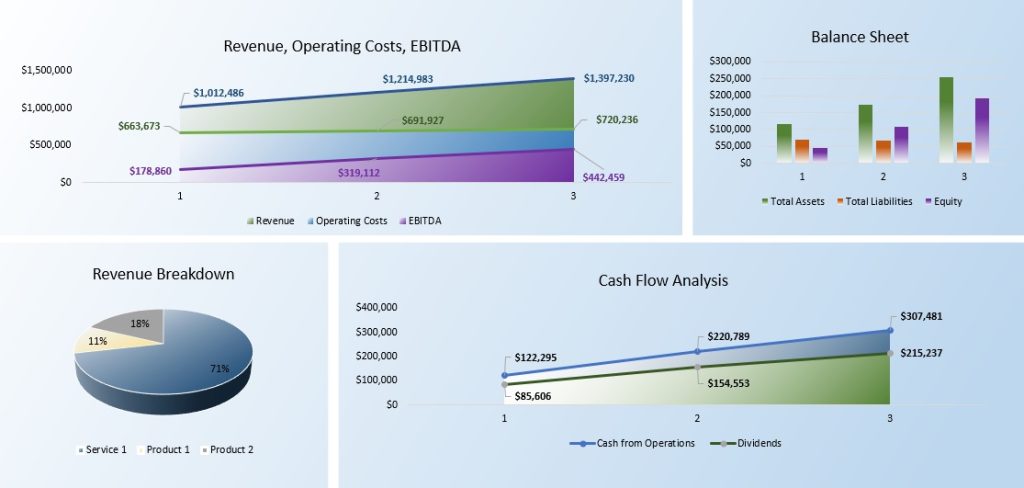
1.0 Executive Summary
The purpose of this business plan is to raise $1,000,000 for the development of a day trading business while showcasing the expected financials and operations over the next three years. Day Trader Inc. (“the Company”) is a New York based corporation that will trade for its own account with the intent to generate profits from trades. The Company was founded by John Doe.
1.1 Operations
Day Trader will solicit capital from accredited investors (defined later) with the intent to use this capital to make investments marketable securities that will be traded aggressively on a daily basis and with the usage of extensive leverage. The Company expects to generate compounded annual returns of 35% to 45% per year on capital invested into the Day Trader’s portfolio holdings. Management anticipates that a substantial amount of the income generated by Day Trader, Inc. will be taxed as ordinary income as investments will not be held for a substantial period of time (usually, the Day Trader will hold investments for a one day to one month period). The third section of the business plan will further describe the day trading operations of the Day Trader, Inc.
1.2 The Financing
At this time, the Company is seeking to raise $1,000,000 for the development of the Day Trader, Inc.’s operations. Mr. Doe is seeking to sell an 40% ownership interest in the business in exchange for this capital. Briefly, the capital will be used as follows: • Acquisition of profitable investments and marketable securities. • Development of the Company’s office. • General working capital.
1.3 Mission Statement
Management’s mission is to develop the Day Trader into a large scale investment firm that that will provide dividend income, capital appreciation, and interest income to the Company’s Founder and future investors.
1.4 Management Team
The Company was founded by John Doe. Mr. Doe has more than 10 years of experience in the day trading and investment management industry. Through his expertise, he will be able to bring the operations of the business to profitability within its first year of operations.
1.5 Sales Forecasts
Mr. Doe expects a strong rate of growth at the start of operations. Below are the expected financials over the next three years.
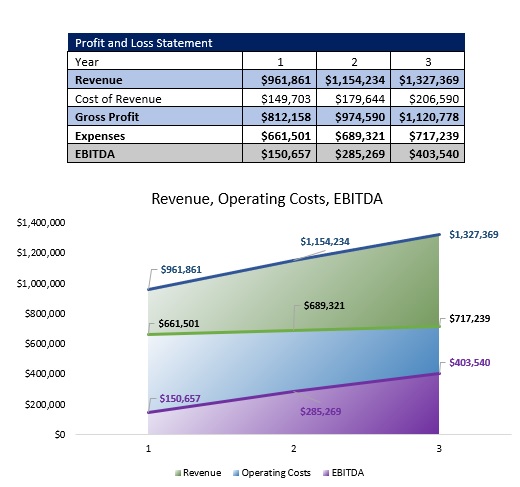
1.6 Expansion Plan
The Company will to undergo an aggressive expansion after the successful completion of the initial capital raising period. As time progresses, Mr. Doe may seek to solicit funds from outside investors via a private placement memorandum so that the business operates more as an investment firm or hedge fund rather than an independent trading company.
2.0 Company and Financing Summary
2.1 Registered Name and Corporate Structure
Day Trader, Inc. The Company is registered as a corporation in the State of New York.
2.2 Required Funds
At this time, the Day Trader requires $1,000,000 of equity funds. Below is a breakdown of how these funds will be used:
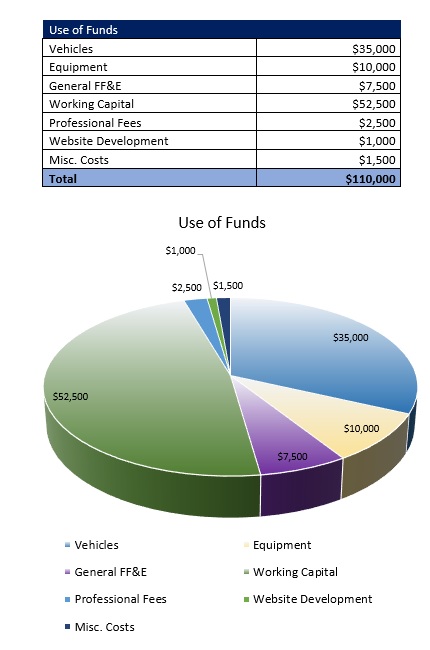
2.3 Investor Equity
At this time, Mr. Doe is seeking to sell a 50% interest in the Day Trader in exchange for the capital sought in this business plan. Please reference the Company’s private placement memorandum regarding more information regarding the Company’s fee and ownership structure.
2.4 Management Equity
John Doe currently owns 100% of the Day Trader, Inc.
2.5 Exit Strategy
At this time, Management has not outlined a divestiture strategy for Day Trader, Inc.
3.0 Operations
Below is a description of the Day Trading Operations of Day Trader, Inc.
3.1 Day Trading of Marketable Securities
Management will make investments directly into marketable securities including stocks, bonds, options, and related securities. . The Company intends to develop a number of trading strategies including options trading, LEAPs trading, long position/short position trading, and other methods of trading that will produce small but consistent gains on a weekly and monthly basis. The Day Trader may also engage a covered call strategy that would allow the fund to amply it return on investment for securities that are held for an extended period of time.
4.0 Strategic and Market Analysis
4.1 Economic Outlook
This section of the analysis will detail the economic climate, the day trading and investment management industry, the customer profile, and the competition that the business will face as it progresses through its business operations. Currently, the economic market condition in the United States is in recession. This slowdown in the economy has also greatly impacted real estate sales, which has halted to historical lows. However, this should not impact the Day Trader’s revenues as the business will use market strategies that profit from both the upswings and downswings of equity and options markets.
4.2 Industry Analysis
The financial services sector has become one of the fastest growing business segments in the U.S. economy. Computerized technologies allow financial firms (including independent day traders) to brokerage services anywhere in the country. In previous decades, most financial firms and traders needed to be within a close proximity to Wall Street in order to provide their clients the highest level of service. This is no longer the case as a firm can access almost every facet of the financial markets through Internet connections and specialized trading and investment management software. With these advances, several new firms have been created to address the needs of people in rural and suburban areas. It should be noted that many day traders actively focus on generating income for their own accounts without having to accept capital from third parties. As such, there has been the recent question as to whether or not these individuals are considered to be part of the securities industry. It is anticipated that the next US Economic Census will determine whether or not the individual trading activities of individuals falls into an industry segment.
4.3 Customer Profile
Day Traders (should they decide to raise capital from third parties) have a very limited scope of people to which they can market their investment portfolio. This is especially true for the Day Trader as the Company will use marketable securities as its primary method of its day to day revenue generating activities. Among people that the Company may solicit for investment, Management has identified the following demographic profile: • Income of at least $500,000 • Average net worth of $3,000,000 • Is a bank, trust, or other private equity organization with at least $5,000,000 of assets. Unfortunately, this business (for its investors) caters only to high net worth individuals that have an aggregate income of over $200,000 (if single) or $300,000 (if the client is married) or a net worth of at least one million dollars. Strict regulatory oversights prevent the Company from marketing the day trading operations to anyone that is not considered an accredited investor. These regulations may become more stringent as the Securities and Exchange Commission moves to have greater regulatory oversight over the hedge fund industry.
4.4 Competitive Analysis
As the business intends to operate via free market trading, it is very difficult to determine the competition that the business will face as it progresses through its business operations. However, should Management decide to raise capital from third parties then the business would be competing against several thousand hedge funds and investment advisory firms that engage in active trading on behalf of their clients. This is one of the sections of the business plan that you must write completely on your own. The key to writing a strong competitive analysis is that you do your research on the local competition. Find out who your competitors are by searching online directories and searching in your local Yellow Pages. If there are a number of competitors in the same industry (meaning that it is not feasible to describe each one) then showcase the number of businesses that compete with you, and why your business will provide customers with service/products that are of better quality or less expensive than your competition.
5.0 Marketing Plan
Once the business decides to raise capital from third parties, Day Trader, Inc. intends to maintain an extensive marketing campaign that will ensure maximum visibility for the business in its targeted market. Below is an overview of the marketing strategies and objectives of the Day Trader once capital raising activities commence.
5.1 Marketing Objectives
- Establish relationships with investment advisories within the United States.
- Develop an online presence by developing a website and placing the Company’s name and contact information with online directories.
5.2 Marketing Strategies
As the Company cannot directly market its trading services to the general public, the Day Trader will hire a capital introduction firm to showcase the operations of the business to potential investors if Mr. Doe is capable of developing an ongoing track record that would warrant an investment from third party firms. These firms, for a commission, will introduce potential investors and investment groups to Management. These companies maintain extensive lists of accredited investors and institutions that frequently make investments into private investment companies. If the Company wishes to seek additional outside capital, Mr. Doe will also make presentations at popular hedge fund conventions while concurrently obtaining speaking engagements among other investment meetings so that his visibility and that of the firm increase over time.
5.3 Pricing
In this section, describe the pricing of your services and products. You should provide as much information as possible about your pricing as possible in this section. However, if you have hundreds of items, condense your product list categorically. This section of the business plan should not span more than 1 page.
6.0 Organizational Plan and Personnel Summary
6.1 Corporate Organization

6.2 Organizational Budget

7.0 Financial Plan
7.1 Underlying Assumptions
- The Day Trader will have an annual revenue growth rate of 16% per year.
- The Company will earn a compounded annual return of 30% on its investment portfolio.
- The Owner will acquire $1,000,000 of equity funds to develop the business.
7.2 Sensitivity Analysis
It is the goal of the Company to make investments (including quickly traded investments) in economically viable companies that will produce dividend income, interest income, and capital appreciation while primarily focusing on the day to day income that can be generated through the Company’s trading operations. During times of economic recession, the Company’s portfolio may have issues with alpha generation, which in turn, could lead to lower ROI’s on the Day Trader’s portfolio. However, the Company intends to use a number of investment strategies that will ensure that the firm will produce profits regardless of the general economic climate.
7.3 Source of Funds

7.4 General Assumptions

7.5 Profit and Loss Statement

7.6 Cash Flow Analysis
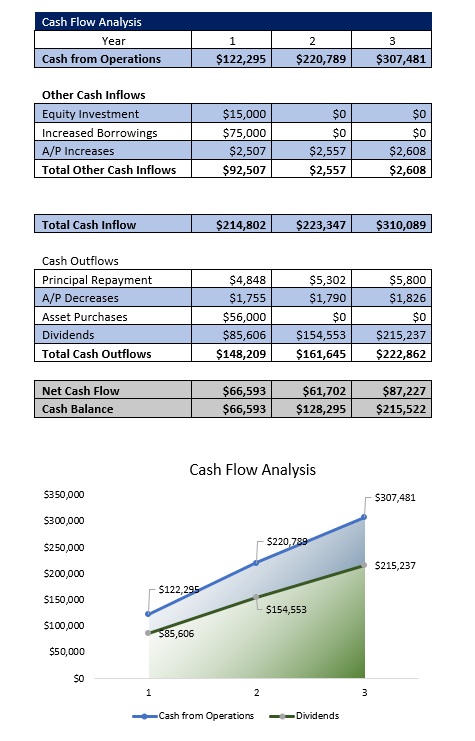
7.7 Balance Sheet

7.8 Breakeven Analysis
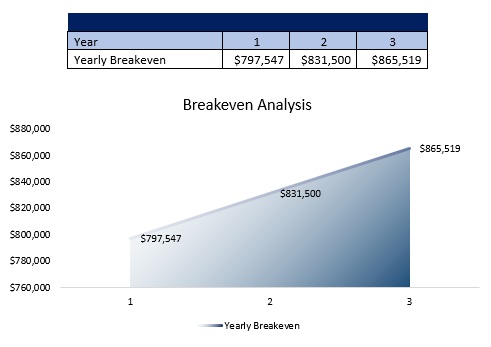
7.9 Business Ratios

